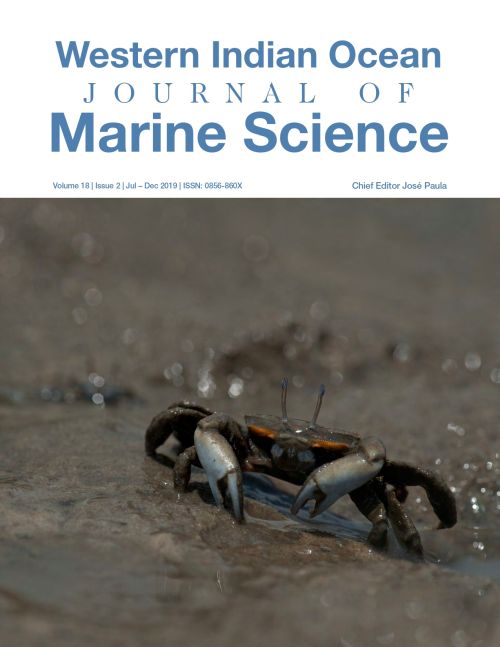Main Article Content
Small-scale milkfish (Chanos chanos) farming in Kenya: An overview of the trends and dynamics of production
Abstract
A number of donor-funded projects by NGOs, government departments and faith-based organizations have piloted milkfish farming along the coast of Kenya at different scales with the aim of addressing poverty and food security at the community level. This paper provides an overview of the history of milkfish farming, organisation of operations, funding, farmers trends, and production dynamics, using both secondary and primary data. Primary data were obtained from quantitative and qualitative assessments covering 26 community milkfish farming groups, while secondary data were obtained from the grey literature and donor-funded project reports. Additional primary data were obtained through 9 key informant interviews covering three coastal Counties, and focus group discussions (8-10 members) at all the community milkfish farms. The study established that milkfish farming could be traced back to the early 1980’s as a by-product of the prawn farming intervention by FAO, and later in other private farms that practised prawn farming. Community/village based small-scale milkfish farming was initiated about two decades ago using organised community groups (OCGs) as the entry point. The number of OCGs undertaking milkfish farming fluctuated with availability of donor funds and increased significantly between 2007 and 2015 with an increase in earthen pond farming area from 0.9ha to 6.8ha over this period. However, the scale of production remained low. Annual milkfish production increased from less than 50kg in 2005 to a maximum of 3.2 tons in 2015. Milkfish farming has not attained production levels that can address poverty and food security issues; a fact that was associated with the lack of reliable milkfish seed for stocking culture facilities. Harvests from existing farms are sold at the farm gate and in nearby market centres with a few communities venturing into opening fish shop outlets to sell their produce.




